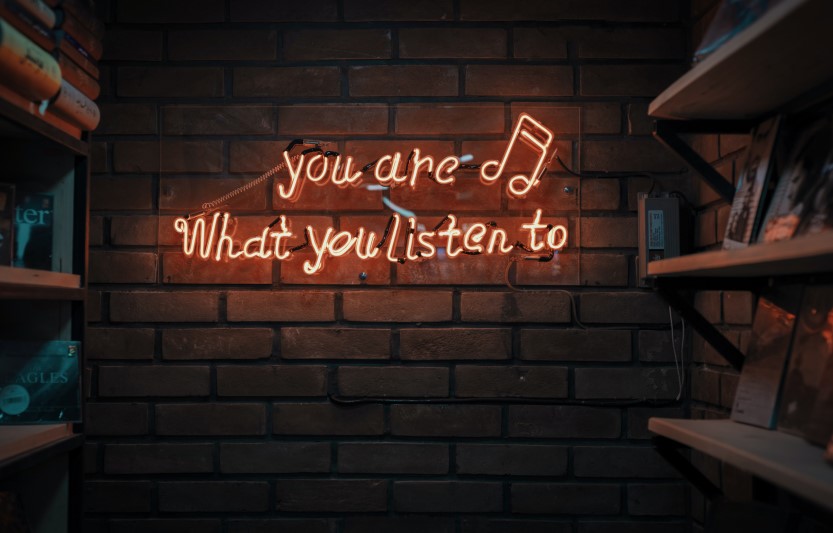
What in the world is 432 Hz vs 440 Hz? Well, these are just two different frequencies that have sparked a debate over which is better.
If you are still confused, you’re not alone. In simple terms, the debate is over which frequency should be used to tune instruments to. You could tune your guitar to 440 Hz or 432 Hz. Or you could have an entire orchestra tune to those or any other frequency for that matter.
Granted, 440 Hz is universally accepted as the frequency we tune our instruments to. However, there are some that argue that 432 Hz is a better frequency to tune to. Why? The explanations go from stating that 432 Hz just sounds better all the way to saying that this is the exact frequency in which the universe vibrates. Let’s take this slowly, shall we? Here is a quick look at the debate of 432 Hz vs 440 Hz.
Understanding frequencies
A frequency is simply a rate in which something occurs or is repeated over a particular period of time. A frequency of 440 Hz corresponds to the note known as middle A. When you play a middle A on guitar, that string vibrates 440 times per second.
The traditional method of tuning instruments for centuries was the tuning forks. With time, it was agreed that they all should vibrate at 440 Hz.
This is the most basic definition and way to understand what 440 Hz is. However, how did it come to be the standard by which we tune all music? Well, that question is the subject of several books by distinguished musicologists, but we’ll try to give you a direct and short answer below.
How did 440 Hz become the standard?
Before we had reliable electronic tuners, music was tuned to a tuning fork. Tuning forks became somewhat standardized in the 18th century. Back then it was decided that the standard used to tune instruments in western music would be A4, or the A above middle C. Naturally, these tuning forks could differ and it was difficult to make them all identical. In other words, not every tuning fork would vibrate at exactly 440 Hz. Some would be a little more, others a little less. In other words, you could have a musician in a given city tuning to 436 Hz and another musician in another city tuning to 443 Hz.
Insert 432 Hz
Some claim that 432 Hz is the natural frequency of the universe. Additionally, this frequency is also believed (by some) to have cosmic healing powers. Lastly, it is also believed to be a better frequency for attracting an audience to your music. Imagine that! Just tune your guitars and bass to 432 and you could finally become a rock star!
These claims are quite substantial and impressive. However, there is one problem with them: they’re not backed by evidence. In other words, the case for 432 Hz is not much different than a conspiracy theory. Naturally, there are many myths that come with that, most of them already debunked.
Take for instance the myth that Mozart used 432 Hz for all his music. The only evidence from an ancient tuning fork from the time Mozart was alive has a frequency of 421.6 Hz. Not quite 432 Hz.
Another myth is that the Nazis used 440 Hz to take over the world. But a little bit of research shows that the 440 Hz standard was established by the British Standards Institute in an international conference in London in 1939.
There are also claims that the heart, the brain, the earth, the sun and water all vibrate at 432 Hz. All of these claims are false and have been debunked.
Beliefs vs facts
Naturally, 432 Hz is a real frequency, just like all others. However, unlike all others, supernatural claims have been made about this frequency, but none backed by evidence. It is true that some people will prefer music tuned to 432 Hz rather than 440 Hz, but the opposite is also true. Some people also prefer yellow over blue, while others will rather have vanilla over chocolate ice cream.
If 432 Hz soothes you, makes you happier, releases your stress… that is great! However, that is quite far from the supernatural powers attributed to this frequency. Simply said, different things sound better or worse to different people. Some love jazz, others think it is boring. Some adore metal, others can’t stand it. That is the very nature of life and it’s a beautiful thing. You can believe that jazz is the greatest music on earth, without demanding that all music becomes jazz from now on because of its healing powers.
False theories
Despite the fact that we live in an era of endless information, we have a severe problem of fact vs fiction. You can find many sources to justify any position on basically anything. You can find literature justifying and explaining how the earth is flat all the way to the already debunked conspiracy theory of Paul is Dead regarding Paul McCartney.
So perhaps you do prefer how 432 Hz sounds. I’ve heard music tuned to this frequency and in all honesty I liked it. Please keep in mind that the human ear can hear frequencies from 20 Hz all the way to 20 000 Hz. That’s quite a range, and remember you can add decimals to any frequency. Tell me, have you heard how 415 Hz sounds? How about 543 Hz? 203.2 Hz? Who cares? Who has that kind of time anyways?
The debate of 440 Hz vs 432 Hz just does not hold any water. Yes, it makes no sense. It is futile to start a debate over which hour of the day is better. Hey, 4:35 am is the best time ever! Sounds ridiculous right? So does the frequency debate. Right? No? Feel free to leave us a comment on where you stand on this debate.


